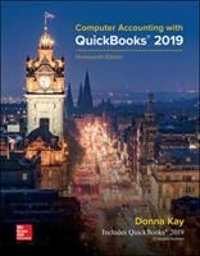Answered step by step
Verified Expert Solution
Question
1 Approved Answer
Can you answer these? 1. Which one of the following is a characteristic of a business combination that is accounted for as an acquisition? A.
Can you answer these? 1. Which one of the following is a characteristic of a business combination that is accounted for as an acquisition? A. Fair value only for items received by the acquirer can enter into the determination of the acquirer's accounting valuation of the acquired company. B. Fair value only for the consideration transferred by the acquirer can enter into the determination of the acquirer's accounting valuation of the acquired company. C. Fair value for the consideration transferred by the acquirer as well as the fair value of items received by the acquirer can enter into the determination of the acquirer's accounting valuation of the acquired company. D. Fair value for only consideration transferred and identifiable assets received by the acquirer can enter into the determination of the acquirer's accounting valuation of the acquired company. E. Only fair value of identifiable assets received enters into the determination of the acquirer's accounting valuation of the acquired company 2. Bullen Inc. acquired 100% of the voting common stock of Vicker Inc. on January 1, 20X1. The book value and fair value of Vicker's accounts on that date (prior to creating the combination) follow, along with the book value of Bullen's accounts: Assume that Bullen issued 12,000 shares of common stock with a $5 par value and a $47 fair value to obtain all of Vicker's outstanding stock. In this acquisition transaction, how much goodwill should be recognized? A. $144,000. B. $104,000. C.$64,000. D. $60,000. E. $0. 3. Prior to being united in a business combination, Botkins Inc. and Volkerson Corp. had the following stockholders' equity figures: Botkins issued 56,000 new shares of its common stock valued at $3.25 per share for all of the outstanding stock of Volkerson. Assume that Botkins acquired Volkerson on January 1, 2010. Immediately afterwards, what is consolidated Common Stock? A. $456,000. B. $402,000. C. $274,000. D. $276,000. E. $330,000. 4. Chapel Hill Company had common stock of $350,000 and retained earnings of $490,000. Blue Town Inc. had common stock of $700,000 and retained earnings of $980,000. On January 1, 2011, Blue Town issued 34,000 shares of common stock with a $12 par value and a $35 fair value for all of Chapel Hill Company's outstanding common stock. This combination was accounted for as an acquisition. Immediately after the combination, what was the total consolidated net assets? A. $2,520,000. B. $1,190,000. C.$1,680,000. D. $2,870,000. E. $2,030,000. 5. The financial statements for Goodwin, Inc., and Corr Company for the year ended December 31, 20X1, prior to Goodwin's acquisition business combination transaction regarding Corr, follow (in thousands): Picture On December 31, 20X1, Goodwin issued $600 in debt and 30 shares of its $10 par value common stock to the owners of Corr to acquire all of the outstanding shares of that company. Goodwin shares had a fair value of $40 per share. Goodwin paid $25 to a broker for arranging the transaction. Goodwin paid $35 in stock issuance costs. Corr's equipment was actually worth $1,400 but its buildings were only valued at $560. In this acquisition business combination, at what amount is the investment recorded on Goodwin's books? A. $1,540. B. $1,800. C. $1,860. D. $1,825. E. $1,625
Step by Step Solution
There are 3 Steps involved in it
Step: 1

Get Instant Access to Expert-Tailored Solutions
See step-by-step solutions with expert insights and AI powered tools for academic success
Step: 2

Step: 3

Ace Your Homework with AI
Get the answers you need in no time with our AI-driven, step-by-step assistance
Get Started


